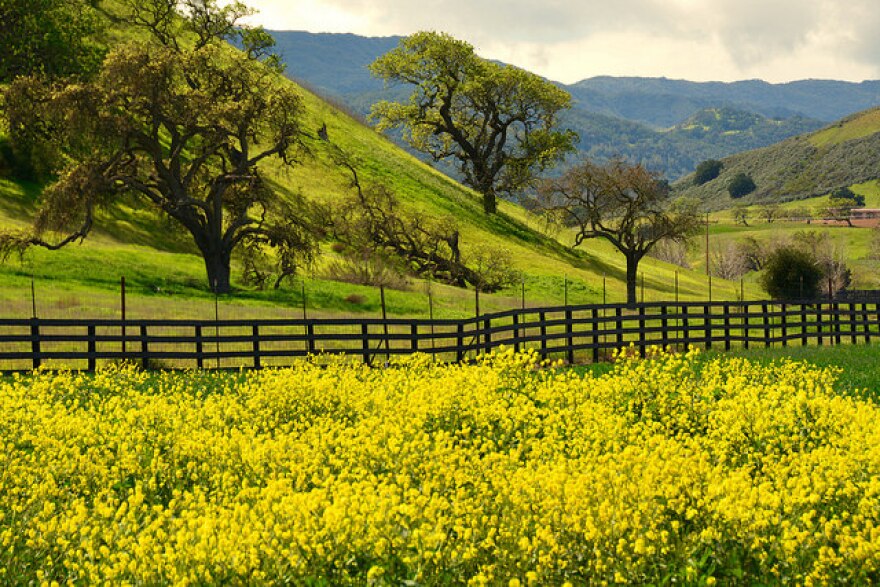Time for another installment of Central Coast Curious. That’s our new reporting projecting where listeners ask questions and KCBX News investigates and reports back to you.
Every spring, a nearly-neon yellow flower blooms over the Central Coast’s hillsides: mustard. But as listener Leslie Thompson points out in her Central Coast Curious question, mustard hasn’t always been here — it may be pretty, but it’s an invasive plant. Thompson asks, “how did mustard come to “invade” the Central Coast?
To find out, KCBX spoke with Dr. Matt Ritter, a botany professor at Cal Poly in San Luis Obispo.
Essentially, Ritter says, a key to the answer lies within adobe bricks. Specifically, the bricks of California’s Spanish missions.
Molded from the surrounding area’s clay, straw and sand, mission adobe bricks contain the seeds and pollen from other plants, too — almost like a time capsule for Californian flora.
So in their quest to understand more about the history of Californian plant life, researchers have cracked open these adobe bricks.
“They know the exact date when each mission was built, so they know the date of the adobe brick,” Ritter said. “And under a microscope, you can actually look at the seeds and pollen in the brick, and tell whether those are native or not native.”
Researchers have found mustard seeds in many of the later missions’ bricks, because mustard seeds and pollen were around by then during construction. But they aren’t present in the bricks of the earliest-built missions.
Some suggest the Franciscan padres specifically planted mustard as a marker for El Camino Real—the road that connects the California missions—throwing out seeds between the missions to create a yellow-seed road. But it’s hard to verify.
“I’ve had some discussions Dan Kreiger, the local mission historian about that, and he, in my understanding, has some evidence that was actually a purposeful introduction, that black mustard was purposefully introduced,” Ritter said. “The problem with the mission era,” Ritter said, “is there was very little written about plants, at the time.”
So we know mustard first arrived in California in the late 1700’s. And that time period was a big deal for Californian plants. It marked the arrival of the first invasive species.
“In 1769, the padres cross the Tijuana River estuary and come north, and start to set up missions,” Ritter said. “At that time they brought plants from Europe with them. So in California, that date is important in the fact that we consider everything that was here in California before that to be native, and everything that was brought in is now growing and reproducing on its own afterward to be non-native.”
Whether the padres planted mustard to create a path of gold, or simply grew mustard in their gardens for seasoning, over the centuries, the invasive plant has found the Central Coast to be most hospitable. Clues like those adobe bricks help illuminate the historical record.
You can submit a Central Coast Curious question, or vote on the next question we’ll answer, at KCBX dot org.



